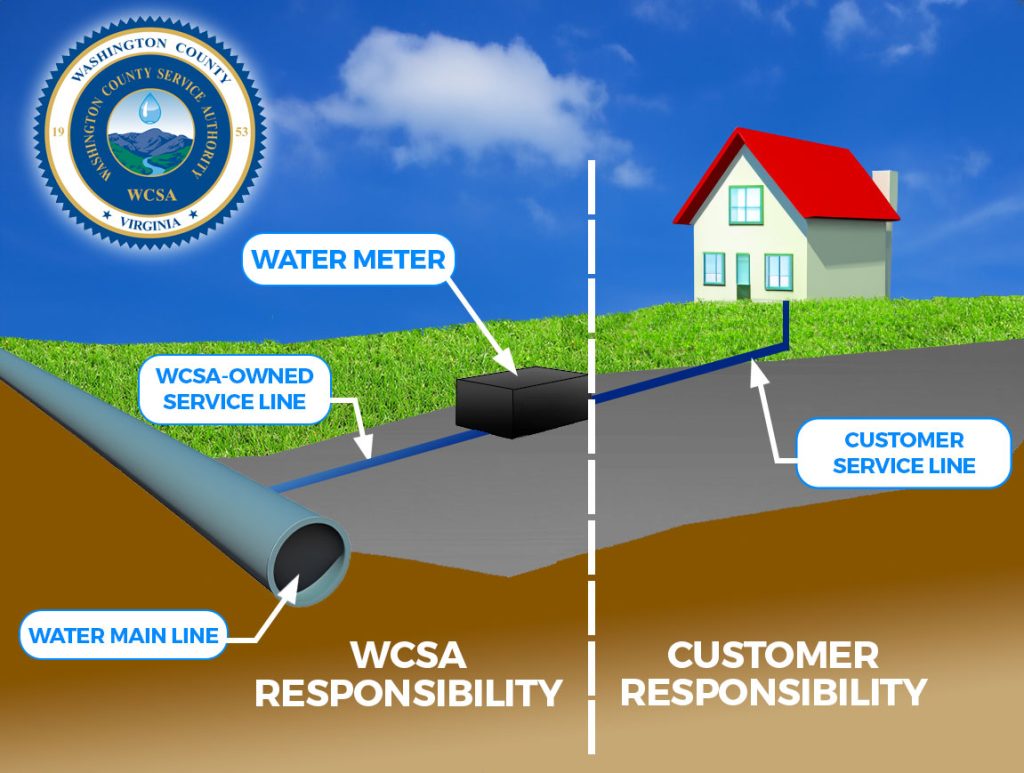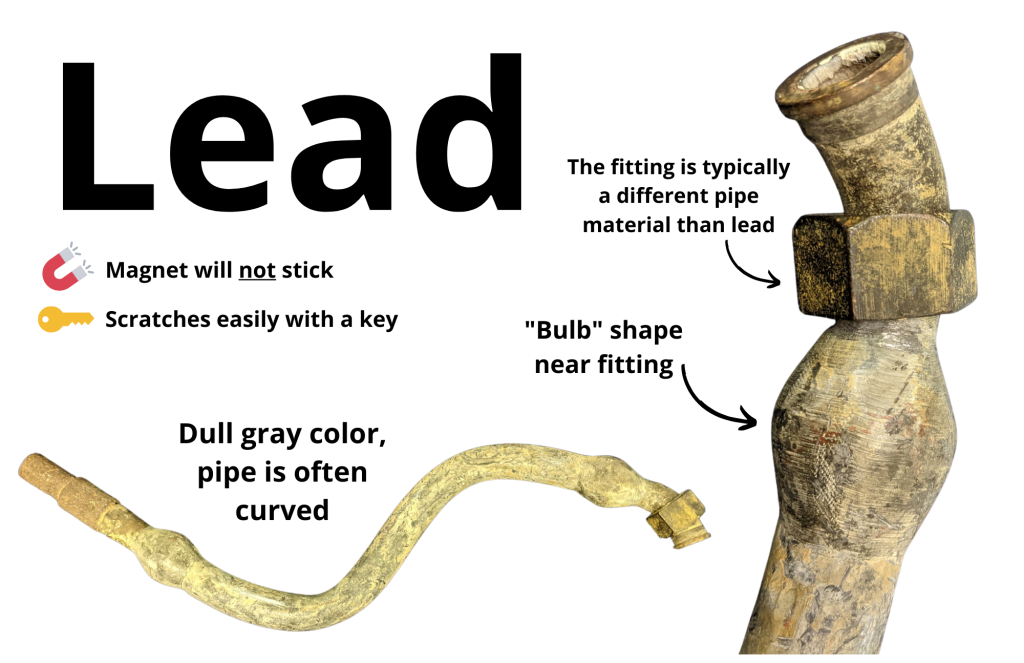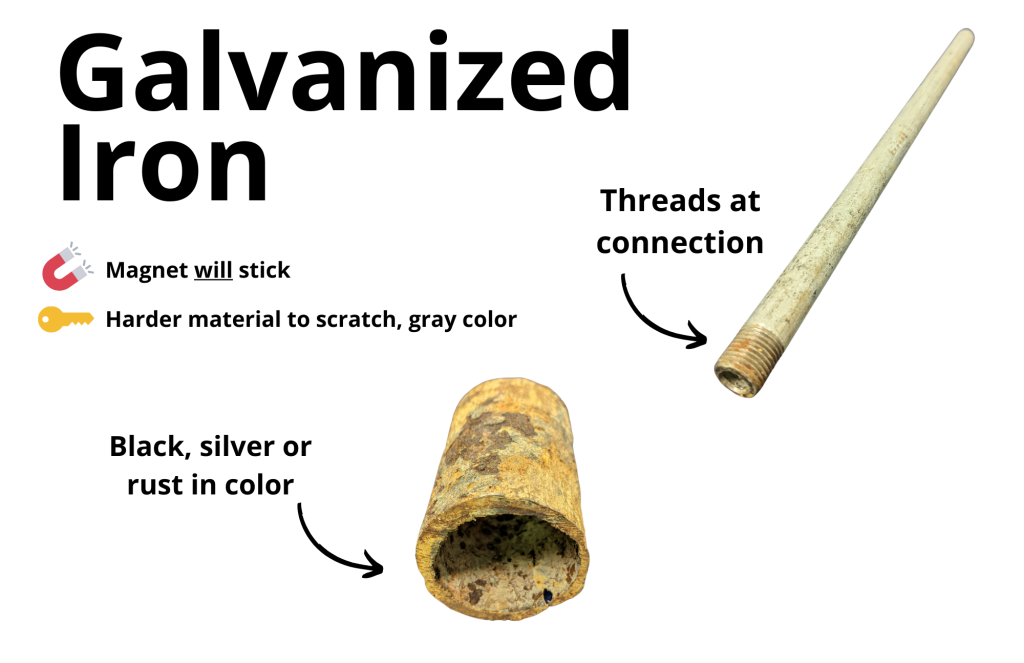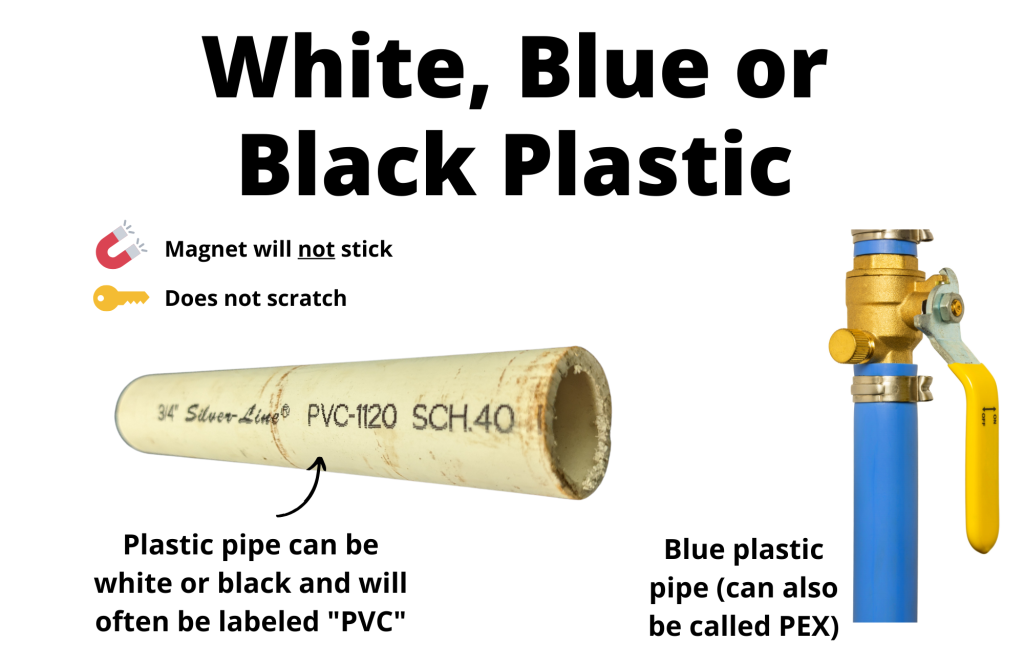The U.S. Environmental Protection Agency (EPA) has made recent changes to its Lead and Copper rule for safe drinking water. These adjustments require WCSA to identify water service lines that are composed of lead and galvanized pipe. WCSA is conducting a Lead Service Line Inventory to identify where these types of pipes may exist.
What we are doing!
Customer service lines run from the water meter to your home or building. Property owners are responsible for these lines.
WCSA is responsible for the lines that run from the water main to the water meter on your property.
The water that leaves our treatment plants does not contain lead. The risk of lead entering the drinking water comes from corrosion of plumbing materials made with lead. In most cases, lead piping was utilized in homes and buildings constructed before 1988.
The EPA’s Lead Service Line Inventory (LSLI) is a means of establishing an inventory of the materials in service lines connected to a public water distribution system, with the purpose of identifying areas with the greatest potential for lead contamination of drinking water and most in need of remediation.
WCSA must submit this information to the EPA.
What can you do?
WCSA needs your help identifying the type of service line that runs from your water meter into your home or building.

Your service line can be identified by finding where it enters into the wall of your house or structure. The plumbing entering the home is sometimes different from the plumbing that is utilized throughout your house. You can locate your service line by entering your crawl space or basement and identifying where water enters your house.
If you don’t know where the water enters your house, locate your water meter next to the road and follow a straight line to your house. In most cases, this is where the water will enter your house.
How to Check Your Service Line’s Material
- Find the water service line entering your property. You may see it where it comes through the floor or wall, in a basement or on a lower level, or at the property’s water shutoff valve.
- Bring a magnet and a metal object, such as a coin, with you to check the pipe’s material.
- Scratch the pipe with a metal object, such as a coin, to reveal the metal. You may need to scratch through paint.
- Try to attach a magnet by sticking it to the pipe.
If your pipe is copper:
The pipe may appear dull brown on the outside, but will be the color of a bright penny if gently scratched. A magnet won’t stick to a copper pipe.

If your pipe is lead:
The pipe will appear dull and soft, but will turn a shiny silver color when scratched. A magnet won’t stick to a lead pipe.

If your pipe is galvanized iron:
The scratched area will remain a dull gray and a magnet will stick to the surface.

If your pipe is plastic/PVC:
The pipe will not scratch and a magnet won’t stick to the surface.

Once you determine the type of your service line, you may complete the survey by clicking on the link below. It is important to provide as much information as possible to WCSA. You may also pick up a copy of the survey in the WCSA drive-thru.
Click here to take the survey now.
If you are unsure about the location of the service line on your property, you may have it checked by a licensed plumber and make sure you are provided with the results for submitting to WCSA. You may also contact WCSA’s Customer Service Department at 276-628-7151 and schedule an appointment to have a WCSA specialist assist you in identifying your service line type. In the meantime, WCSA will continue to update our customers as we work through the inventory. We appreciate your help as we navigate this process, and we are proud to serve you.


